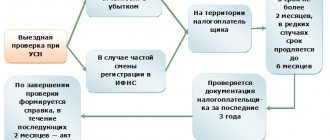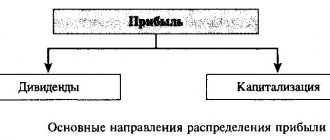Kontur.Accounting is a web service for small businesses!
Quick establishment of primary accounts, automatic tax calculation, online reporting, electronic document management, free updates and technical support.
Try it
For each organization, it is important to maintain two legally established types of accounting. Each of them has its own goals and objectives. What is the difference between accounting and tax accounting?
First, the purposes of record keeping differ. Accounting provides information about the results of activities to the management of the organization and stakeholders. Tax accounting allows fiscal authorities to control the completeness of tax payment, the reliability of reporting and the implementation of legislation on taxes and fees.
Secondly, appropriate legislation has been developed for taxation purposes, in particular the Tax Code. Accounting statements are maintained in accordance with federal law, PBU and other documents. It is legislative regulation that is the main reason for the differences.
Permanent differences in accounting and tax accounting
Permanent differences arise from the portion of profits that is allocated only to accounting or only to taxable profits. That is, if your organization's actual and taxable income or expenses differ, then permanent differences arise. This is how permanent tax liabilities (PNO) or assets (PNA) appear. Due to the PNA, the income tax that you reflect in the reporting period will increase, and the PNA will reduce payments. Do not reflect PNO and PNA in the balance sheet, since they are recognized in the period when permanent differences arose.
However, PNO and PNA need to be shown in the financial results report, namely in line 2421. To account for them, accounts 68 and 99 are used.
PNA accrued: Dt 99 Kt 68 PNA accrued: Dt 68 Kt 99
Types of discrepancies
Important! Tax accounting is carried out by organizations that pay income tax. At the same time, profit, which is calculated in accordance with the Tax Code of the Russian Federation, differs from accounting profit
In order to reflect in accounting the differences between the income tax and the tax indicated in the declaration, PBU 18/02 “Accounting for calculations of corporate income tax” is used. At the same time, the differences between accounting and tax accounting can be permanent or temporary.
Fixed income or expenses include:
- accepted in accounting, but not forming taxable profit both in the current and in subsequent periods;
- recognized in tax accounting, but not accepted in accounting either in the current or in subsequent periods.
Permanent differences result in permanent tax liabilities (PNO) or assets (PNA). The occurrence of PNO means that the company has an obligation to pay tax, that is, income tax payments will be increased in the reporting period. In contrast, a PVA means that the company will not have to pay part of any tax payment.
Temporary differences are understood as income or expenses that are accepted for accounting in one reporting period, and for tax accounting in another. It is temporary differences that can give rise to deferred taxes, which is the amount of income tax that increases or decreases the payment to the budget in the subsequent reporting period. There are two types of temporary differences: deductible and taxable. The former reduce income tax in subsequent periods, and the latter increase it.
If the company's income and expenses reflected in the accounting records correspond to the company's income and expenses accepted for taxation, then the tax calculated on the accounting profit will be equal to the income tax indicated in the tax return. If there are discrepancies, then the two types of this tax will be related by the following formula:
NP = UR(D) + SHE – IT + PNO – PNA, where
NP – income tax;
UR(D) – conditional income tax expense (income);
SHE – the difference between SHE accrued in the reporting period and SHE repaid in the same period;
IT is the difference between IT accrued in the reporting period and IT repaid in the same period.
Temporary differences in accounting and tax accounting
If you attribute income and expenses that form actual profit and form the income tax base to different reporting periods, temporary differences appear. They have different effects on taxable income, so they are divided into two groups.
- If income is recognized earlier in tax accounting and later in accounting, deductible temporary differences appear. This leads to the emergence of a deferred tax asset (DTA).
- In the opposite situation, taxable temporary differences arise and a deferred tax liability (DTL) arises.
The formation of ONA or ONO leads to the fact that in subsequent reporting periods the amount of income tax will decrease or increase. In the balance sheet, SHE is taken into account in line 1180, ONO - in line 1420. SHE and IT are reflected in account 68, but there are also special accounts for them - 09 and 77, respectively.
Accrued IT: Dt 09 Kt 68 Accrued IT: Dt 68 Kt 77
In the financial results report, IT is reflected in line 2430, and IT is reflected in line 2450. Due to the complexity of the formation and reflection of permanent and temporary differences, regulatory authorities are trying to create a unified approach to generating profit. But for now, an accountant has to take into account all the intricacies of accounting and tax accounting systems.
Deferred tax assets and liabilities.
Deferred tax assets represent taxes that have actually been paid (or often carry forward losses from prior periods) but have not yet been recognized in the income statement.
Deferred tax liabilities arise when income tax expenses in financial accounting exceed standard income tax expenses.
Deferred tax assets and liabilities typically arise when accounting standards and tax authorities impose different timing for the recognition and payment of taxes .
For example, they occur when a company uses accelerated depreciation in its tax reporting (to increase expenses and reduce tax payments in the early years of depreciation) but uses straight-line depreciation for the same assets in its financial reporting.
Although the amount of annual depreciation may not be the same over the useful life of the asset (for example, straight-line depreciation of 5% may be allowed for accounting purposes, but 10% for tax purposes), both methods allow the cost of the asset to be depreciated.
Because these differences will eventually be recovered or adjusted over the depreciation life of the asset, they are called "temporary differences."
Any deferred tax asset or liability is based on temporary differences that result in excess or underpayment of taxes that the company expects to recover in the future.
Since the taxes will be refunded or paid in the future, this is only a temporary difference and therefore a deferred tax asset or liability is created.
Changes in the deferred tax asset or liability on the balance sheet reflect the difference between the amounts recognized in the prior period and the current period.
Changes in deferred tax assets and liabilities are added to the income taxes payable to determine the company's income tax expense as reported in the income statement.
At the end of each financial year, deferred tax assets and liabilities are restated by comparing the tax and carrying amounts of balance sheet items.
Identified temporary differences are assessed in terms of whether they will lead to future economic benefits.
For example, let's say that Pinto Construction (the hypothetical company) depreciates its equipment using the straight-line method, with an annual depreciation rate of 10%. Tax authorities only allow depreciation at 15% per year.
At the end of the financial year, the carrying amount of the equipment for accounting purposes will be greater than the tax value of the equipment, resulting in a temporary difference.
A deferred tax item can only be recognized by a company if it is certain that future economic benefits will flow to the company.
In our example, the equipment is used in Pinto Construction's core business. If the company is stable and going concern, there should be no doubt that it will receive future economic benefits from the equipment, and it would be appropriate for the company to create a deferred tax item.
If there is doubt about the future economic benefits of the temporary difference (for example, if Pinto Construction is in liquidation), the temporary difference will not create a deferred tax asset or liability.
If a deferred tax asset or liability has been recognized in prior periods, but the economic benefit criteria are not met in the current period, then IFRS requires that the existing deferred tax asset or liability be reduced or written off entirely. In accordance with US GAAP, a valuation allowance is created.
See also paragraph IAS 12:56
When assessing future economic benefits and temporary differences, much is left to the auditor's discretion.
Accounting and tax profit – Enterprise Info
At any enterprise, be it a large corporation or a small firm, accountants need to calculate the amounts of accounting and tax profits, as well as generate appropriate reporting.
Accounting and tax profit
Accounting and tax profit are considered one of the main indicators of the financial condition of an enterprise. According to accounting standards, each enterprise records cash flows in primary documentation.
Based on this, accounting profit reflects all business transactions of the organization: income received and expenses incurred. The calculation of tax profit must be made to correctly determine the income tax.
The Tax Code of the Russian Federation contains a closed list of types of income that are not subject to income tax. There is also an article with a list of expenses that do not need to be taken into account when calculating the tax base. But this list is not final.
In order for expenses that are not on this list to reduce the amount of taxable profit, they must satisfy a number of additional conditions provided for by tax legislation.
Accounting and tax profits are similar in many respects:
- Often calculated on the basis of the same primary documents;
- When determining both tax and accounting profits, opportunity costs are not taken into account;
- There is a possibility of a negative value for both one and the second type of profit.
But despite some similarities, these are different concepts used in different areas of accounting.
Determining the difference between accounting and tax profit at first glance is very difficult. But if you understand a little about accounting and the taxation system, everything becomes clear.
The main differences in the calculation of tax and accounting profit:
- Goals of Calculus. Information on tax profit is calculated in accordance with the Tax Code of the Russian Federation to establish the tax base of the organization. In turn, the calculation of accounting profit is needed by the management of the enterprise for a more complete understanding of the functioning of the organization, to comply with the instructions of Russian legislation regarding accounting and to provide this information to external organizations;
- Tax options. Tax profit is considered only if the organization uses the general taxation system (OSNO) or the simplified taxation system (STS) according to the “income minus expenses” scheme. That is, in cases where tax is calculated taking into account both income and expenses. Accounting profit is calculated in any case;
- Determination methods. When calculating accounting profit, all income and expenses that are justified by relevant documentation are taken into account. When calculating tax profit, not all income and expenses are taken into account, but only those listed in the Tax Code of the Russian Federation;
- Reporting periods. Since in the course of an organization’s economic activities, income and expenses may be reflected in accounting in one period, and in tax accounting in another, then when calculating tax and accounting profits, these amounts may also appear in different periods.
As a result, the difference between accounting and tax profit may not be very significant in numerical terms. In some cases, these amounts are even the same. But the meaning of these two types of calculation is significantly different, although it is equally important for the normal activities of any organization operating under the taxation system, taking into account both income and expenses.
Source:
Calculation of the difference between accounting and tax profit
The difference between accounting and tax profit is calculated if there are different rules for accounting for income and expense transactions. The basic principles for determining this parameter are discussed in this article.
Tax profit and accounting profit
Difference between accounting and tax profit
Example of calculating the difference
Results
Tax profit and accounting profit
The procedure for accounting for income and expense transactions allows you to generate profit parameters that have different meanings in the specified accounting systems. Despite the same accounting object, the amounts of different types of profit may differ significantly depending on the following factors:
- possible temporary discrepancies when reflecting them in the statements - since the recognition of income and expense transactions in the accounting systems under consideration is carried out according to different principles, therefore the same results of business or financial transactions may relate to different periods;
- possible discrepancies in the grounds for recognizing income and expense transactions for each of the accounting systems.
Profit in the field of taxation represents a parameter that is taken into account when calculating tax payments. The formation of such a parameter is carried out according to the standards specified in Chapter. 25 of the Tax Code of the Russian Federation, which provides for the nuances of recognizing certain types of transactions to determine the tax base.
Read more about the content of tax profit in the materials in our section “Organizational profit tax in 2016–2017 under the Tax Code of the Russian Federation.”
In accounting, profit is determined by deducting all documented expenses from the total income of the enterprise for the year.
In the course of current accounting, the difference between two profit indicators at the end of a specific reporting period inevitably comes to light.
Difference between accounting and tax profit
The procedure for calculating the difference when comparing various profit parameters is regulated by PBU 18/02 “Accounting for expenses for corporate income tax”, approved by Order of the Ministry of Finance of the Russian Federation dated November 11, 2002 No. 11n.
The final difference between profit amounts includes permanent and temporary differences. These parameters are identified in the process of maintaining current financial accounting at the enterprise. The basis for the distribution and separate reflection of the difference value is the primary accounting documents.
Find out more about the forms of accounting documents in the article on our website “Primary accounting documents in 2016–2017.”
The list of income and expense obligations that make up the parameters of the permanent difference is defined in clause 4 of PBU 18/02. These include:
- transactions recognized to establish the profit indicator in accounting for the current period, but not taken into account for the tax base of the current and subsequent periods;
- transactions recognized for the taxable base of the reporting period, but not applicable in the accounting indicators of the current or subsequent periods.
An approximate list of conditions for the occurrence of a difference of a permanent nature, as well as the basic principles for including permanent tax obligations in them, are also regulated by clause 4 of PBU 18/02.
Differences of a temporary nature are revealed as a result of assigning income and expense transactions to different reporting periods for both types of accounting and lead to the emergence of deferred income tax (clause 9 of PBU 18/02). This value directly affects the amount of tax payments to be transferred in the current and subsequent periods.
Depending on the impact on profit parameters when calculating tax, differences of a temporary nature can be deductible or taxable. Based on the definition of this classification, deductible indicators lead to a decrease in payments in subsequent periods, while taxable indicators lead to their increase.
Accounting for deferred tax assets and liabilities allows you to comply with the principles of unity of accrual for current transactions and generate reliable financial statements.



